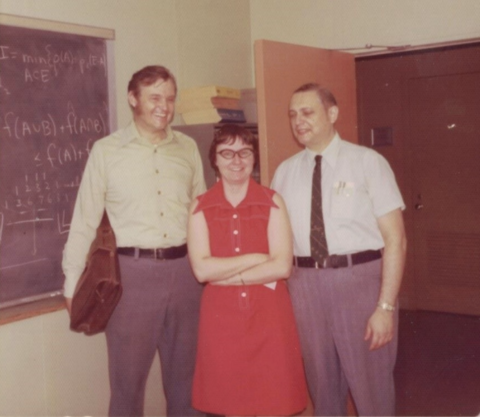Operations Research: Responding to National Needs
Dates: 1960 - 1980
NBS mathematicians answered many calls from government agencies, including DOD, IRS, DOT, FAA, and HUD, for help with challenging national problems.
Operations Research (OR) is the branch of mathematics that focuses on the optimal solution to problems encountered in operating a large enterprise. It began in earnest during World War II with the need to deal with tactical problems in military operations.
OR at NIST traces its beginnings to the SEAC (Standards Eastern Automatic Computer), an early computer designed and built at NBS. It permitted for the first time large-scale OR applications such as determining the best deployment of aircraft to ensure a balance between combat reserve and training. This and similar applications were formulated by George B. Dantzig and collaborators as so-called linear programming problems and solved using his simplex method on the SEAC, starting a long history of research into linear programming and related issues at NIST.

The deep expertise in OR at NIST led to requests by many government agencies for assistance in solving problems of national importance. These included:
-
Economics of commercial supersonic air travel for DOD (1964)
-
Modeling of transportation in the US Northeast Corridor for the Department of Transportation (1965-70)
-
Evaluating aircraft vertical separation standards for the FAA (1976)
-
Optimal audit strategies for use by the Internal Revenue Service (1978)
-
Solution of facility location problems for the IRS and the US Postal Service (1970s-80s)
One example of very high profile work was a request in 1971 by the Department of Housing and Urban Development (HUD) for help in determining the nature and extent of pediatric lead paint poisoning in the US. For this project, Judith Gilsinn of NBS analyzed data on the incidence of elevated blood lead levels for the cities of New Haven, CT, Aurora, IL, and Chicago, IL, and combined them with Census data to develop a model for the prevalence of lead poisoning that could be applied nationwide. The result was the first substantiated national estimate of the nature and extent of lead poisoning. [1]
In a sequel to this effort, NBS staff member Douglas Shier embarked on the study of a large data set of pediatric blood lead levels collected during 1976 in New York City. He demonstrated a strong cyclic variation of blood levels which correlated highly with ambient air lead levels, and also with the amount of lead present in gasoline sold during the same period. [2] These results reinforced and critically defended the decision to phase out leaded gasoline in the United States.
References
-
J. F. Gilsinn. Estimates of the Nature and Extent of Lead Paint Poisoning in the United States. NBS Technical Note 746, National Bureau of Standards, December 1972.
-
I. H. Billick, A. S. Curran, and D. R. Shier. Relation of Pediatric Blood Lead Levels to Lead in Gasoline. Environmental Health Perspectives 34 (1980), 213-217.
-
D. E. Gilsinn and R. F. Boisvert. Foreword. Special Issue Dedicated to Christoph Witzgall. Journal of Research of NIST 111:2 (March-April 2006), vii-ix.
-
D. Shier. National Institute of Standards and Technology (NIST) / National Bureau of Standards. In INFORMS History of OR Excellence, Downloaded May 24, 2022. https://www.informs.org/Explore/History-of-O.R.-Excellence/Non-Academic-Institutions/National-Institute-of-Standards-and-Technology-NIST-National-Bureau-of-Standards-NBS

